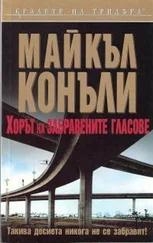The murder book, a blue binder full of printed reports and photos, was still the bible of a homicide investigation in the Los Angeles Police Department, but as the world turned digital, so did the department. Using her LAPD password, Ballard was able to access most of the reports and photos from the case that had been scanned into the digital archives. The only thing missing would be the handwritten notes detectives usually shoved into the back sleeve of the murder book.
Most important, she was able to view the chronological record, which was always the spine of the case, a narrative of all moves made by investigators assigned to it.
Ballard determined immediately that the murder was officially classified as a cold case and assigned to the Open-Unsolved Unit, which was part of the elite Robbery-Homicide Division working out of headquarters downtown. Ballard had once been assigned to the RHD and knew many of the detectives and associated players. Included in that number was her former lieutenant, who had pushed her up against a wall and tried to force himself on her in a bathroom at a squad Christmas party three years earlier. Her rejection of him and subsequent complaint and internal investigation was what landed her on the night shift at Hollywood Division. The complaint was determined to be unfounded because her own partner at the time did not back her up, even though he had witnessed the altercation. Department administrators decided that it would be for the good of all involved to separate Ballard and Lieutenant Robert Olivas. He stayed put in RHD and Ballard was moved out, the message to her clear. Olivas got by unscathed, while she went from an elite unit to a posting no one ever applied or volunteered for, a slot normally reserved for the department’s freaks and fuckups.
In recent months, the irony of this was not lost on Ballard as the country and the Hollywood entertainment industry in particular were awash in scandals involving sexual harassment and worse. The chief of police even instituted a task force to handle all the claims pouring in from the movie industry, many of them decades old. Of course, the chief’s task force was composed of RHD detectives, and Olivas was one of its supervisors.
The history with Olivas was not far from Ballard’s mind as her curiosity about Bosch and the case he was working sent her into the department’s digital channels. Technically she was not breaking any rules by pulling up the old reports, but the case had been moved from Hollywood when its homicide team was disbanded and placed with the Open-Unsolved Unit, which was part of the Robbery-Homicide Division and Olivas’s domain. Ballard knew that her moves in the department database would leave a digital trail that Olivas might become aware of. If that happened, he would have the opportunity to be spiteful and initiate an internal investigation into what she was doing with an RHD case.
The threat was there but it wasn’t enough to stop her. She hadn’t been afraid of Olivas when he followed her into the bathroom at the Christmas party three years ago; she had shoved him back and he’d fallen into a bathtub. She wasn’t afraid of him now.
While the chronological record was the most important part of a case review, Ballard started with a quick survey of the photos. She wanted to see Daisy Clayton in life and in death.
The photo packet included crime scene and autopsy photos but also a posed shot of the girl in what looked to Ballard to be a private school uniform — a white blouse with a monogram over the left breast that said SSA. She was smiling at the camera, her blond hair midlength, makeup covering acne on her cheeks, a distant look already in her eyes. The back of the photo had been scanned as well and it read “Grade 7, St. Stanislaus Academy, Modesto.”
Ballard decided to leave the crime scene photos for later and went to the chrono, first scrolling to see the latest moves on the case. She quickly learned that outside of annual due-diligence checks, the investigation had largely been dormant for eight years, until it was assigned six months earlier to a cold case detective named Lucia Soto. Ballard didn’t know Soto but she knew of her. She was the youngest female detective ever assigned to RHD, beating the record Ballard had previously held by being eight months younger when appointed.
“Lucky Lucy,” Ballard said out loud.
Ballard also knew that Soto was currently assigned to the Hollywood Sexual Harassment Task Force because the powers that be in the department — mostly white men — knew that putting as many women on the task force as possible was a prudent move. Soto, who already had a media profile and nickname because of an act of heroism that led to her RHD posting, was often used as the face of the task force for press conferences and other media interactions.
This knowledge now gave Ballard pause. She put together a quick chronology. Six months earlier, Soto either requested or was assigned to the unsolved Daisy Clayton case. Shortly afterward, she was reassigned from the Open-Unsolved Unit to the harassment task force. Then Bosch shows up at Hollywood Station to ask questions about the case and attempt to get a look at the files of a sex crimes detective.
There was a connection there that Ballard didn’t yet have. She quickly found it and started to understand things better when she conducted a new search of the department database and called up all cases that listed Bosch as a lead investigator. She zeroed in on the last case he handled before leaving the LAPD. It was a multiple-victim murder involving an arson of an apartment building in which several victims, including children, died of smoke inhalation. On several of the reports associated with the case, Bosch’s partner was listed as Lucia Soto.
Ballard now had the connection — Soto took the Clayton case on and then somehow drew her former partner Bosch into it, even though he was no longer with the department. But Ballard didn’t have the reason, meaning there was no explanation as to why Soto would go outside the department for help with the investigation, especially when she was moved out of Open-Unsolved for the task force.
Unable to answer that question for the moment, Ballard went back to the case files and started reviewing the investigation from the start. Daisy Clayton was deemed a chronic runaway who repeatedly left her own home as well as the temporary group homes and shelters she was placed in by the Department of Children and Family Services. Each time she ran, she ended up on the streets of Hollywood, joining other runaways in homeless camps and squats in abandoned structures. She abused alcohol and drugs and sold herself on the streets.
The first record of a police interaction with Daisy was sixteen months before her death. It was followed by several more arrests for drugs, loitering, and solicitation for prostitution. Because of her age, the early arrests only resulted in her being returned to her single mother, Elizabeth, or to DCF authorities. But nothing seemed to stop the cycle of her returning to the streets and of being under the influence of Adam Sands, a nineteen-year-old former runaway with his own history of drugs and crime.
Sands was interviewed at length by the original investigators on the case and was eliminated as a potential suspect when his alibi was confirmed: he was being held in the Hollywood Division jail at the time of Daisy Clayton’s murder.
Cleared as a suspect, Sands was questioned extensively about the victim’s routines and relationships. He claimed to have no information on who she had met with on the night of her murder. He revealed that her routine was to loiter near a shopping plaza on Hollywood Boulevard near Western Avenue that included a mini-market and a liquor store. She would solicit men as they were leaving the stores and then have sex with them in their cars after they drove into one of the many nearby alleys for privacy. Sands said he often stood lookout for her during the transactions but on the night in question he had been grabbed by police on a warrant for not appearing in court on a misdemeanor drug charge.
Читать дальше
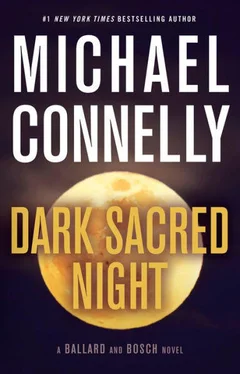
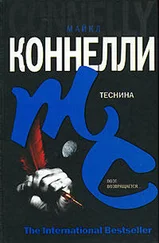
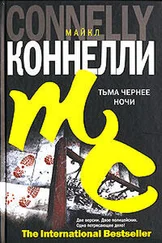




![Майкл Коннелли - Christmas Even [Short story]](/books/390532/majkl-konnelli-christmas-even-short-story-thumb.webp)
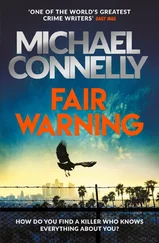
![Майкл Коннелли - The Night Fire [Harry Bosch - 22]](/books/405630/majkl-konnelli-the-night-fire-harry-bosch-22-thumb.webp)

